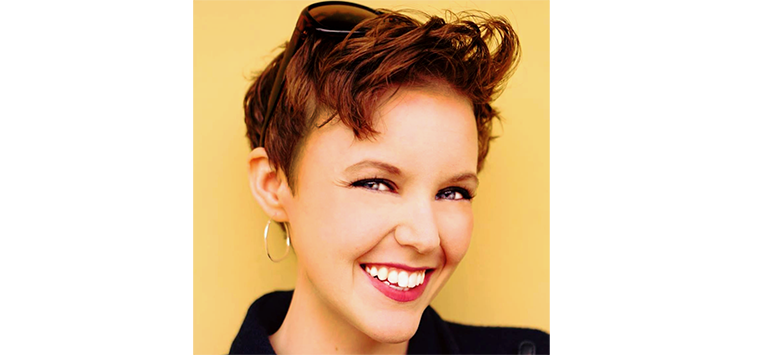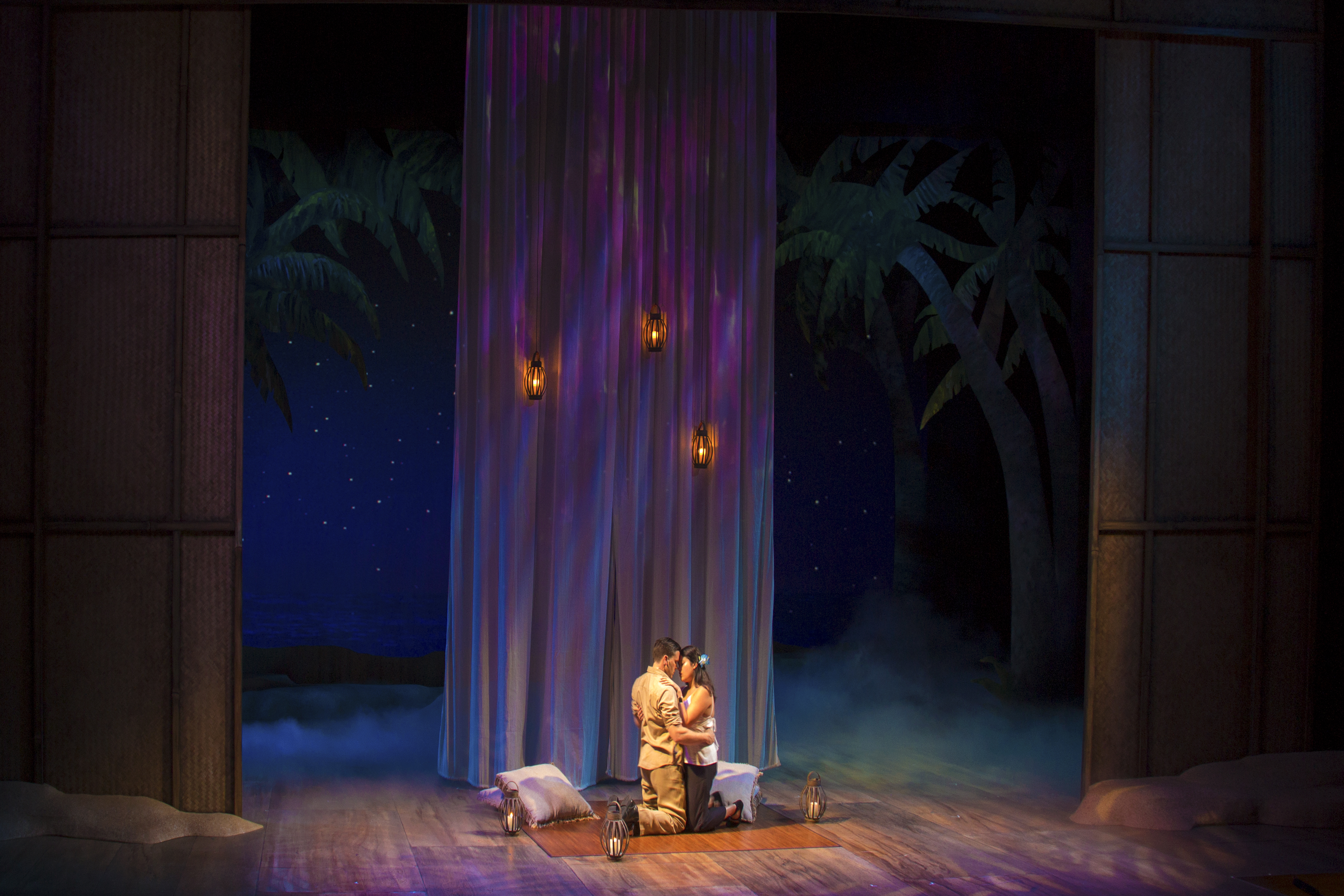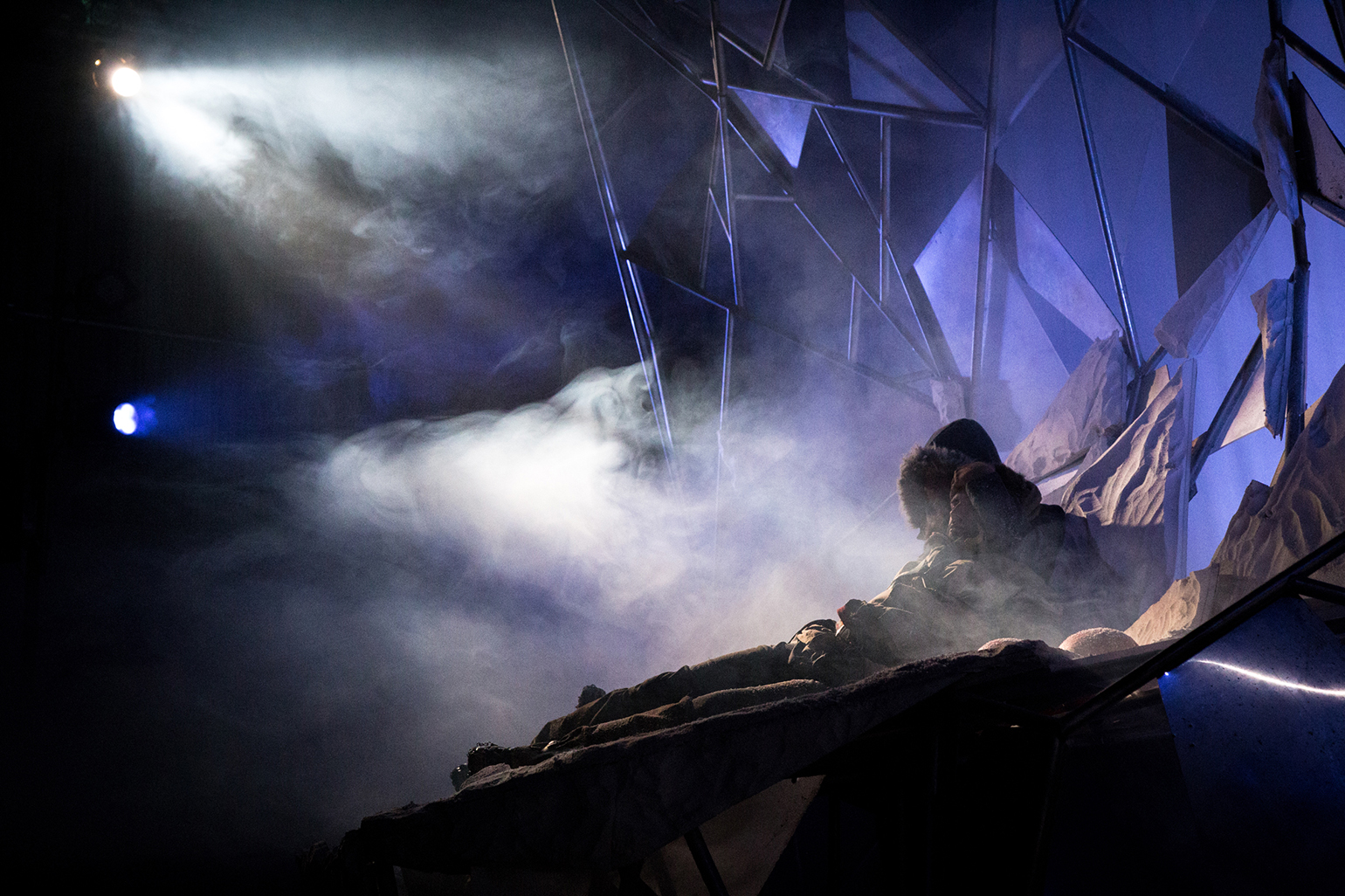Every year at USITT, Live Design/LDI presents the Rising Star Award, which it has funded in perpetuity, to a promising young professional designer. This year the Rising Star Award goes to lighting/digital media designer Maranda DeBusk, who works in regional theatres all across the country. In June, her lighting design for Roméo et Juliette at the Glow Lyric Theatre in Greenville, SC, will be a Featured Emerging Design in the USA Pavillion at the Prague Quadrennial 2019.
Live Design welcomes her to the stellar list of Rising Stars, and chats with her on the eve of her award, presented on March 21, 2019 at USITT in Louisville, KY.

Live Design: What was your path to becoming a designer?
Maranda DeBusk: For me, it all started as a sense of community. We moved around a lot when I was a kid, and everywhere we went, the theatre community was there with a sense of security and purpose. Feeling like I belonged made me want to dig deeper into the art. Although, I didn’t consider myself a designer/artist right away. I have always been very analytically minded. The artistic aspects seemed beyond my grasp. When I started working in lighting, I realized that I had found a place where I could be both artistic and analytical. And in many ways, being able to lean into the inherent logic puzzle that is lighting, I felt more comfortable reaching for the artistic elements. It was through that combination that I settled in to being a designer.
LD: How do you combine (or juggle) lighting and digital media design?
MDB: Because I come from a lighting background originally, I tend to combine the areas. In many ways, the work I do in digital media is the same as the work I do in lighting, though my computer is my console, and I tend to have fewer sources of light. They work hand-in-hand to create the atmosphere and the mood. In the end, it all goes back to the storytelling. The tricky part for me always comes in the scheduling pre-tech. Media prep is so much more involved than lighting, and balancing multiple projects at once with the differing prep schedules can feel a bit like spinning plates at different speeds from the same point on your head. But it tends to work out.

LD: What is your favorite design project to date, and why?
MDB: Picking a favorite is always the hardest. Every show I do has its ups and downs. But one of the ones that stands out most was Mockingbird at the Nashville Children’s Theatre. It’s the story of a young girl with autism whose brother was killed in a school shooting. It’s her journey to understand those circumstances as told through the lens of someone on the spectrum. My little brother was diagnosed with Autism Spectrum Disorder in 2006. The story felt very personal to me, and I am happy that I was able to be a part of sharing it.
I designed projections for the show, and the visual effects focused on her “TRMs” (Total Rage Meltdowns) so my work was focused on how to represent the motion and chaos of being completely overwhelmed by the world around you without any escape. And to top it all off, this very heavy script was written for middle-schoolers. To be able to give this story to them, to help them understand what autism means, what loss means, what family means, it was a truly incredible experience.
LD: Largest problem/solution you have encountered?
MDB: Work/Life balance is my hardest challenge. I’ve designed lots of things and figured out lots of problems: underwater lighting, low hanging grids, too short projector throws, mismatched personalities on teams, too little time. The list goes on. But all of them pale in comparison to the one problem that comes along with every project: finding time to be a person. I don’t have any grand solutions. I don’t think I’ve quite figured out my answer yet. But I do know that when, as an artist, I forget to take time to be a human, the art suffers. The core of what we do comes from the human condition. Particularly as a lighting and media designer, I can cram a lot of tech weeks into one year. But just because you can fit in the show doesn’t mean you always should. Sometimes you and your brain just need to breathe.

LD: How has technology changed in recent years in terms of defining or shaping your work?
MDB: Workflow and productivity have increased exponentially. The speed at which I can access information across multiple devices streamlines everything I do, from controlling the lighting at the console and walking onstage with my phone to continue checking lights to being able to transfer files between computers in seconds instead of hours. When all of that speeds up, so does everything else. Then we can get further into the design faster.
The advancement in accessibility for higher end equipment is also a huge change that I’ve noticed. The spread of LED and moving light fixtures into houses that previously wouldn’t not have had access, and companies having access to inventories of projection equipment they wouldn’t have had three or five years ago makes so much more possible.
LD: What advice would you give to students entering the business today?
MDB: Do a little of everything. Don’t be afraid. Keep your receipts. Take pride in your work, but don’t take yourself too seriously. After all, we get to play pretend for a living.